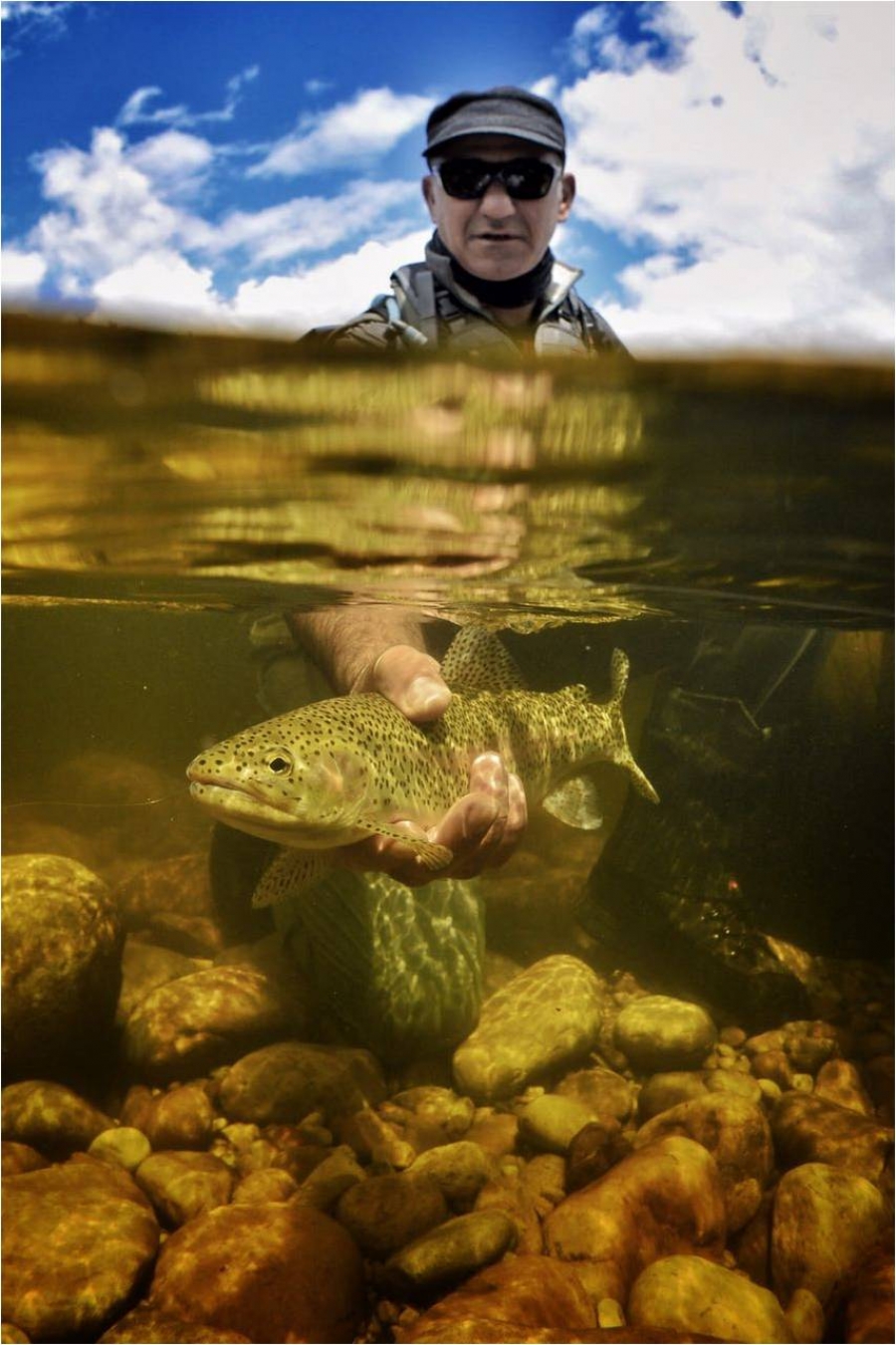Notes from my diary
Last week we fished a local stream a short step ahead of a cold front. The wind was upstream, cold and gusty, the water temperature just 10 degrees and trout were scarce.
But the upstream wind brought to mind a piece I'd just read by Oliver Kite where he said he felt blessed to have a downstream wind. I could only imagine it had something to do with the wind not straightening the leader, leaving the tippet heaped a little, just enough maybe to allow a longer drift before drag set in. It was an interesting observation though, because we so often preach the merits of an upstream breeze. You could argue that a gentle breeze doesn't matter much one way or another, but for the reasons I surmise from Kite's counterintuitive observation on wind direction, you might well be better off with a downstream zephyr if you are going to have one at all! A downstream wind is a different thing.
There was a hatch of a variety of mayflies (duns and imagos), midges and caddis flies. The very beautiful mayfly Adenophlebia dislocans showed up on river side rocks, a bold, darkly-pied mayfly that you never find in great numbers. But when they are about their characteristic boldness is obvious.
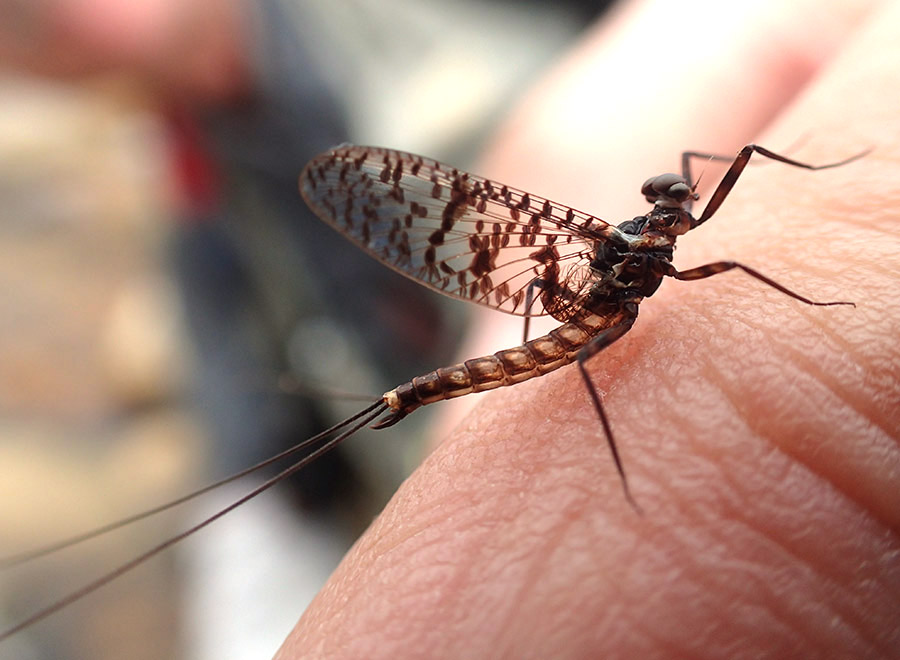
Adenophlebia dislocans, boldly perched on a finger
Click in images to enlarge them
Early on in the day Sand Martins were flying over the river in loops so tight and fast the eye could hardly follow them. One bird suddenly appeared in my peripheral vision, a dusty-grey flash swooping at my dry fly and with its suddenness I struck, the way you strike instinctively at any movement on a Cape stream. The strike snatched the fly from the bird, but after a steep turn over the bank it was back, swooping at the run again in search of the bug it had spied. The fly pattern – not that it's important – was one of Kite's Hawthorns.
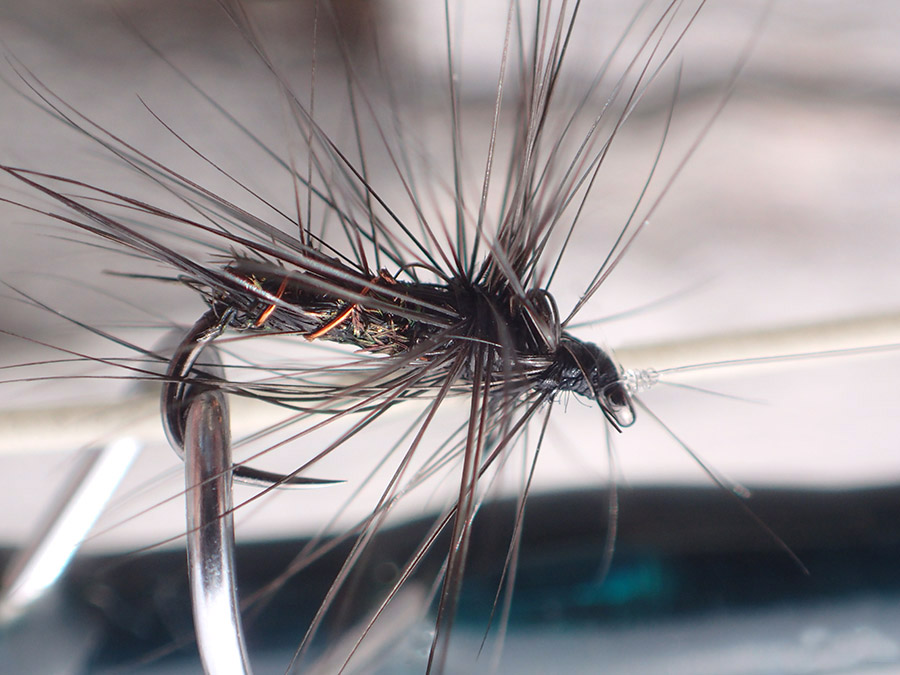
Kite's Hawthorn Fly
Or maybe the pattern was important, because I changed it just then and never raised another Sand Martin. The interlude, though, brought to mind a stanza from a DH Lawrence poem that goes thus:
Dark air-life looping
Yet missing the pure loop ...
A twitch, a twitter, an elastic shudder in flight
And serrated wings against the sky,
Like a glove, a black glove thrown up at the light,
And falling back.
Of course what Lawrence was writing of were not swallows but bats, which spoils the story a little, though earlier in the poem he did write of swallows:
Look up, and you see things flying
Between the day and the night;
Swallows with spools of dark thread sewing the shadows together.
Poetry just doesn't get a whole better than this.
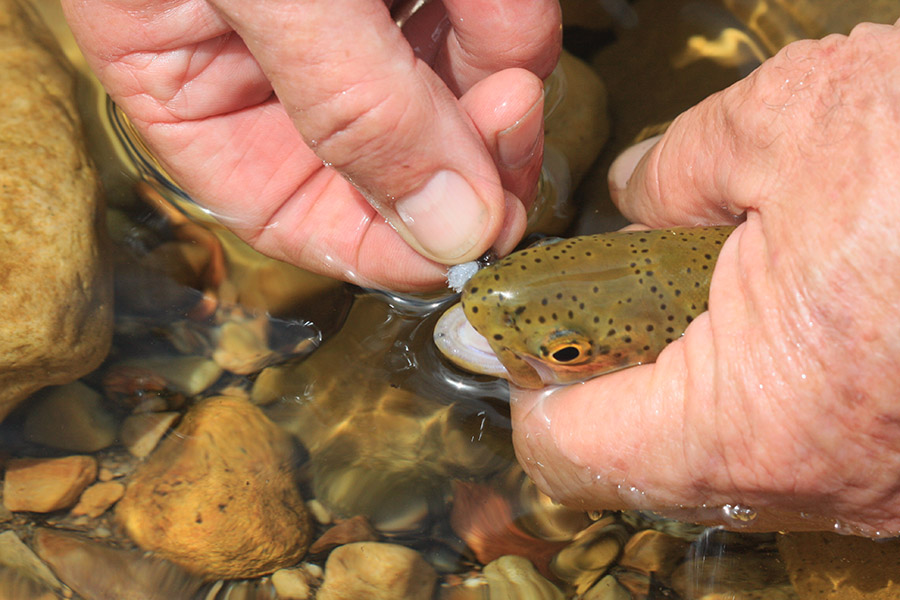
And I must add that this stretch is quite remarkable for its host of attractive riverbed and bank-side tapestries.
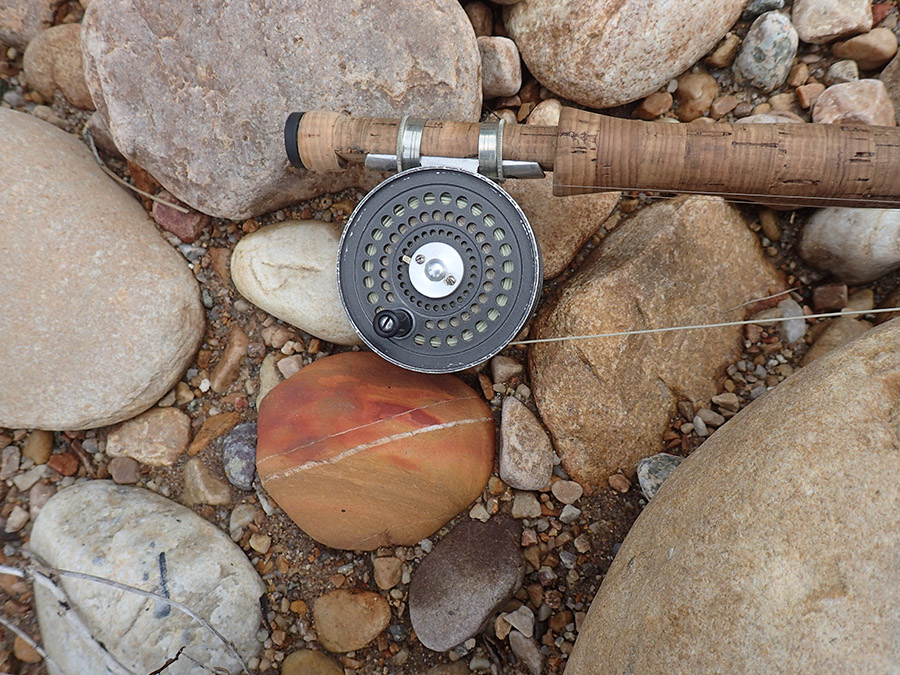
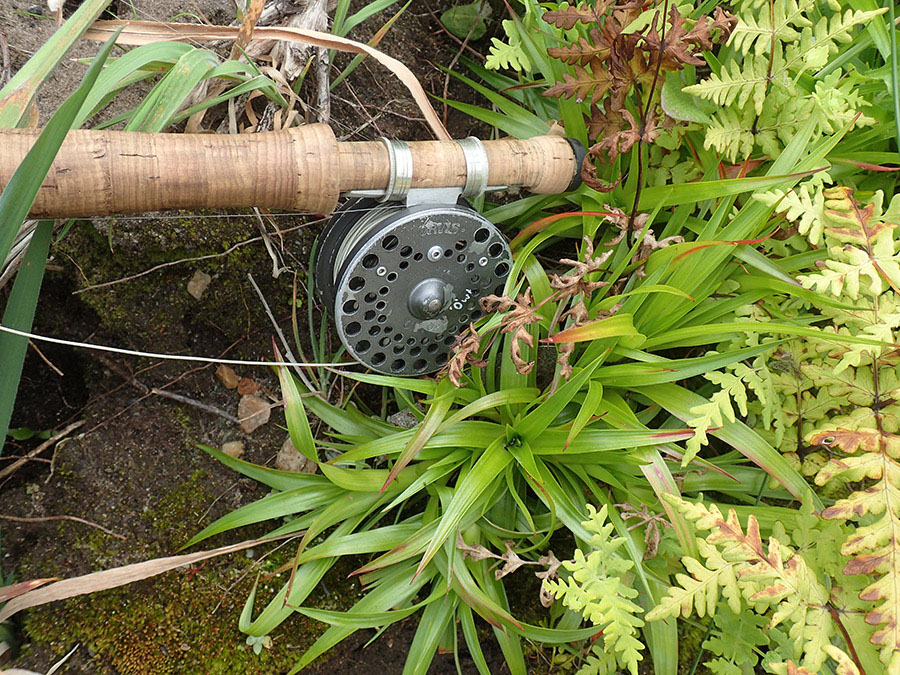
Back on the river and more notes from my diary
Not four days after the Sand Martin encounter Robin and I were back fishing, this time on a little-known mountain stream. Robin had fished the water before, but has never gone as far into the gorge as we went this day. I know the stream well and the higher you climb the better looking, the clearer (almost luminous), and certainly the testier, the runs and glides become.
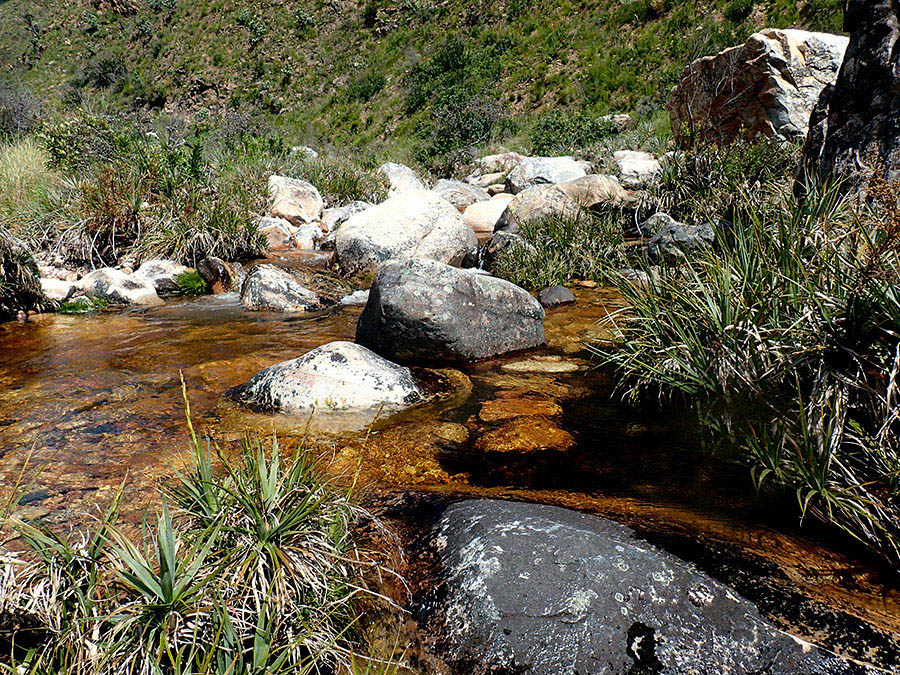
Runs and glides just got better and better...
The breeze was gently upstream, the flow was perfect, the fish were hungry, it was dry fly only, the wild flowers were out in profusion and a scattering of those beautiful mayflies, Adenophlebia dislocans, showed up once again.
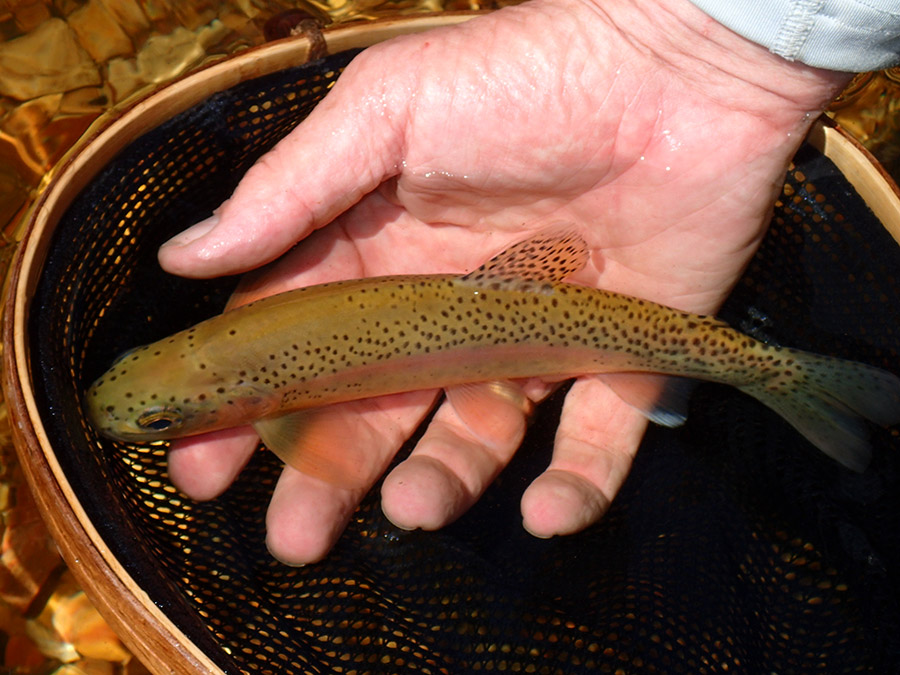
A fifty fish day
It was a fifty fish day for us and I'm not making this up. In fact we might well have had more than 50. Neither of us was counting. And we missed at least 50 takes and snapped off countless flies on hair-fine tippets.
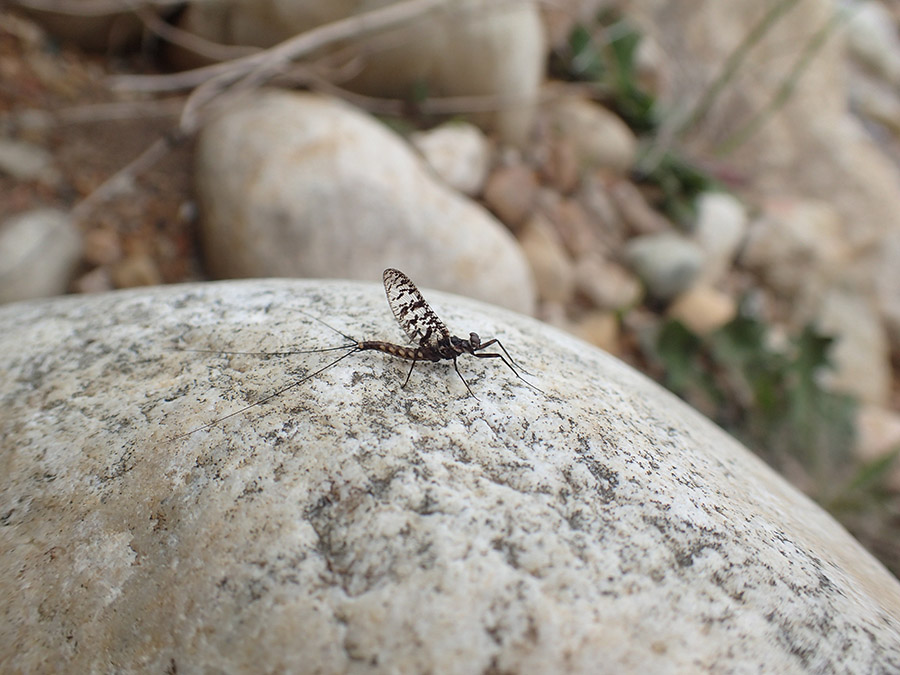
Back again. Adenophlebia dislocans
What more can I say. Oh yes, this time there were no Sand Martins sweeping the runs. And then the next day Robin called to say he was hobbling around stiff and muscle-sore after the hike. I told him that made two of us.
Is CDC a good spotter option?
I don't know, but aim to find out. According to professional fly tyer Marcel Terblanche it is. I tried it with a bunch of shocking pink CDC I recently bought. It's not a cheap alternative to Poly Yarn or most other post materials and according to Ed Herbst it should be pre-dressed with HydroStop.
Here's an example using CDC to tie my single feather CDC Midge. I found you needed two feathers, that the CDC somehow got tangled with other fibres and was generally less easy to work with than more conventional posts. Maybe I just need a little practise.
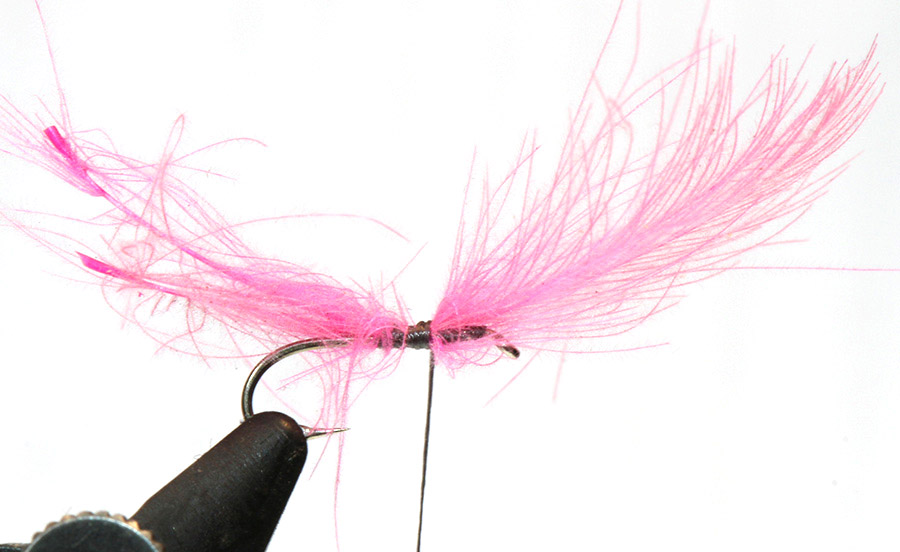
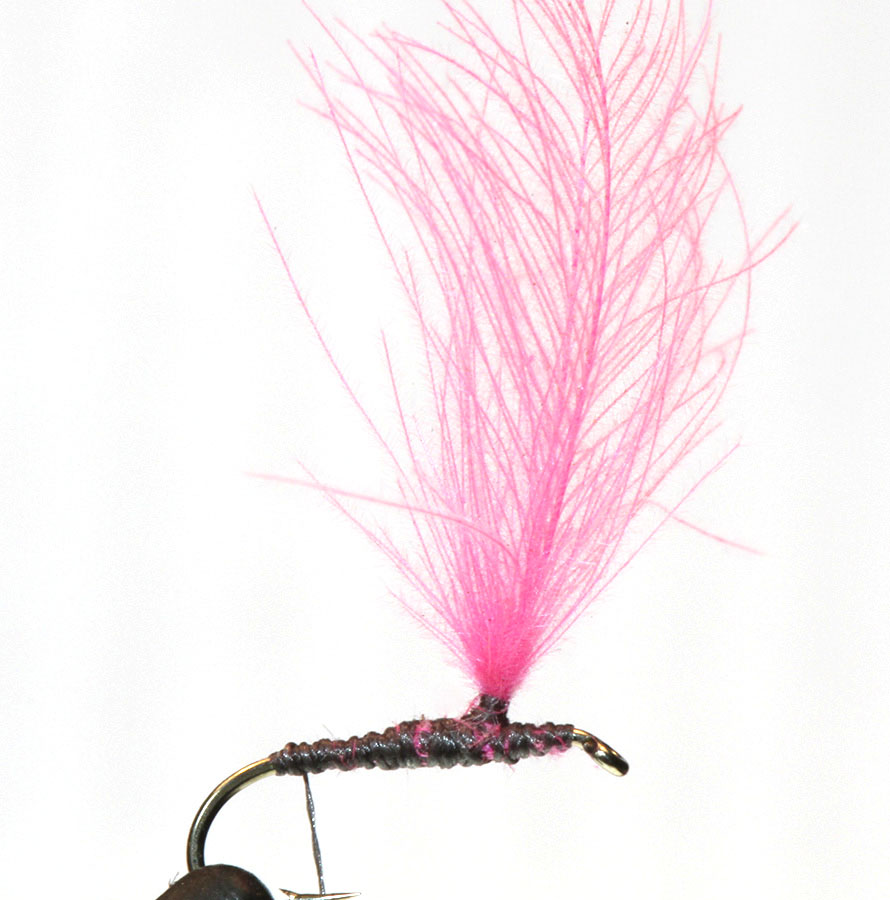
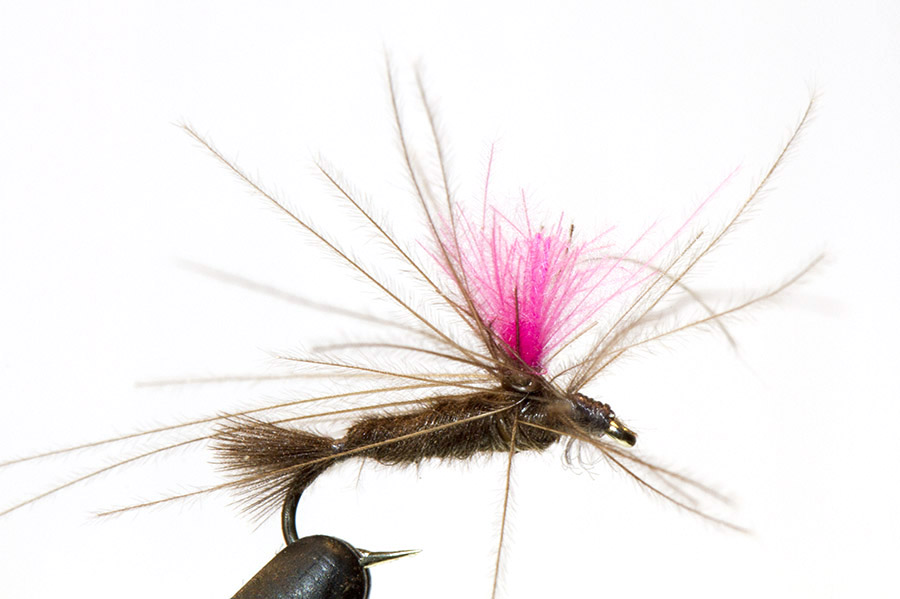
Sage LL series
Don Green's masterly Sage LL rods – and you can add his RPL series as well – could easily have been the pinnacle in this company's rod building history. But they just kept on making good rods. Some later models were a little too quick for small stream work in the view of many, but other models, including the One and Circa, were as good as graphite gets.
But here's the point. I have a friend who is desperately keen to buy an old Sage LL series rod in fair to good condition. If you have one to sell drop me an email at This email address is being protected from spambots. You need JavaScript enabled to view it.">This email address is being protected from spambots. You need JavaScript enabled to view it. and I will put you in contact with him.
Before and after
In my last newsletter I referred to my Simm's boots that any hobo on earth would have been embarrassed to be seen wearing, but to be fair, that was after five season's hard graft, with a pair of Patagonia and Orvis boots sharing the load.
So after careful research I got myself a new pair of Simm's Vapor boots from Tom Lewin at Frontier Fly Fishing. It's hard to imagine a lighter, more comfortable pair of boots in my life and the soles stick to the rocks like glue.
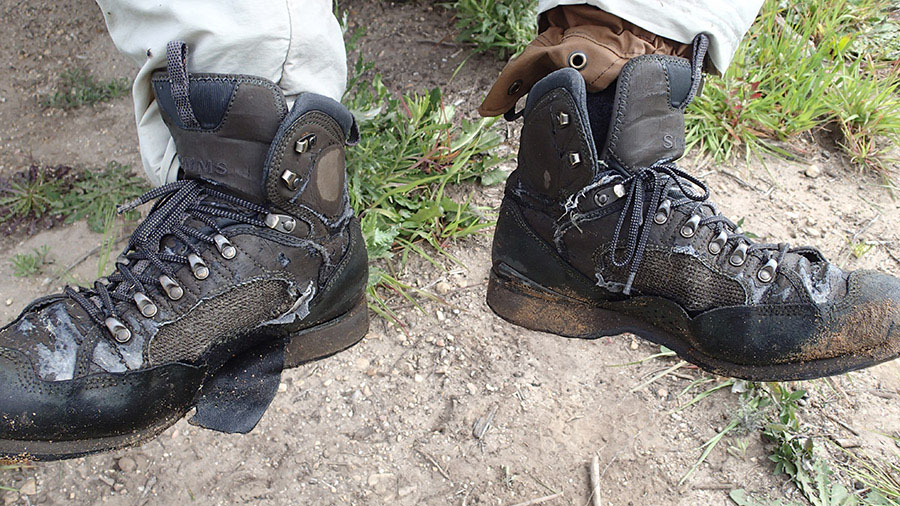
Before and
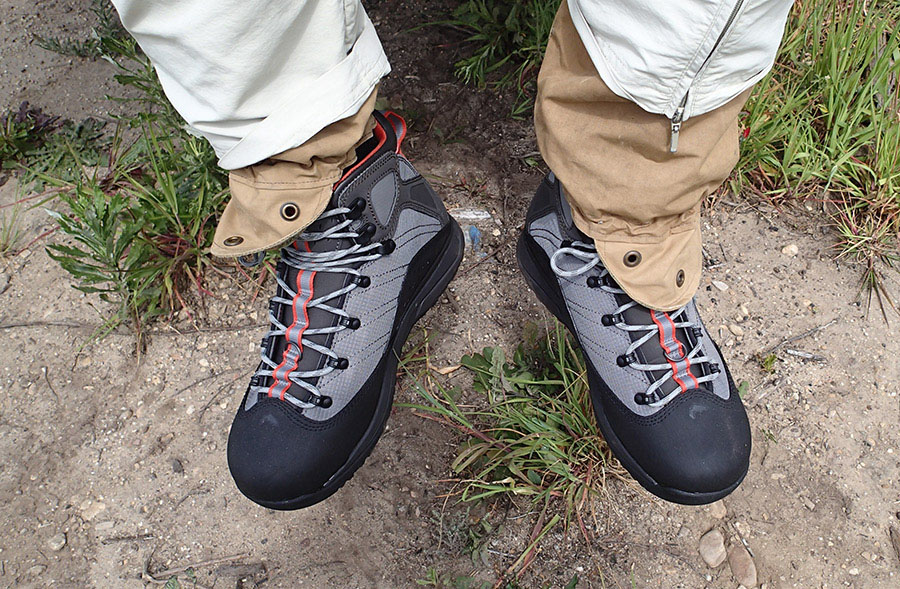
... after
And this is not an advertorial. I pay for my gear. I figure the fly shops need the income and we need the fly shops.
Patrick O'Brien on the National Junior Championships
Says Patrick
The National Junior Championships were hosted by Mpumalanga Fly-Fishing Association (MFFA) in the historical town of Pilgrims Rest between the 5th and 7th of October. The competition comprised of 13 teams (63 anglers) from five provinces. We had sessions on the beautiful Blyde River and a still water session. The river was flowing well despite the poor rainfall. The juniors were catching yellow fish, chisel mouth and both wild and recently stocked rainbow trout and a total of 1016 fish were caught. I was involved as a sector judge and I can assure you that South African competitive Fly-fishing is in very good hands. Western Province “A” team won the event.
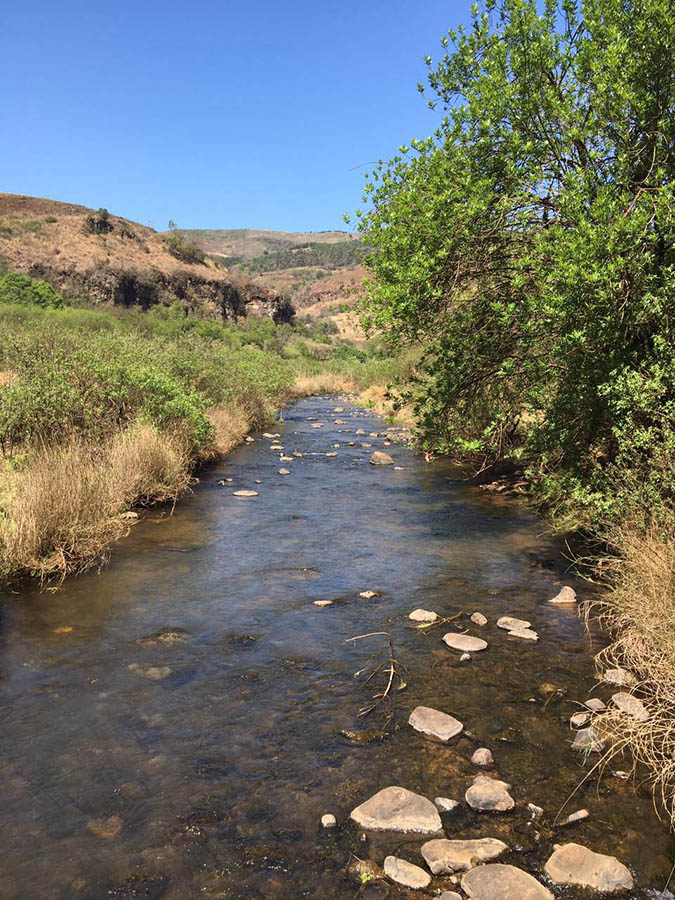
A view of the Blyde River
We have already held the Ladies nationals in the area and will host the 2017 Senior A Nationals there as well.
Pilgrims Rest used to be a very popular fly-fishing venue but about 15 years ago the trout fishing went into decline. The MFFA in conjunction with the local community and two partners are trying to get Pilgrims Rest back on the map as a fly-fishing venue.
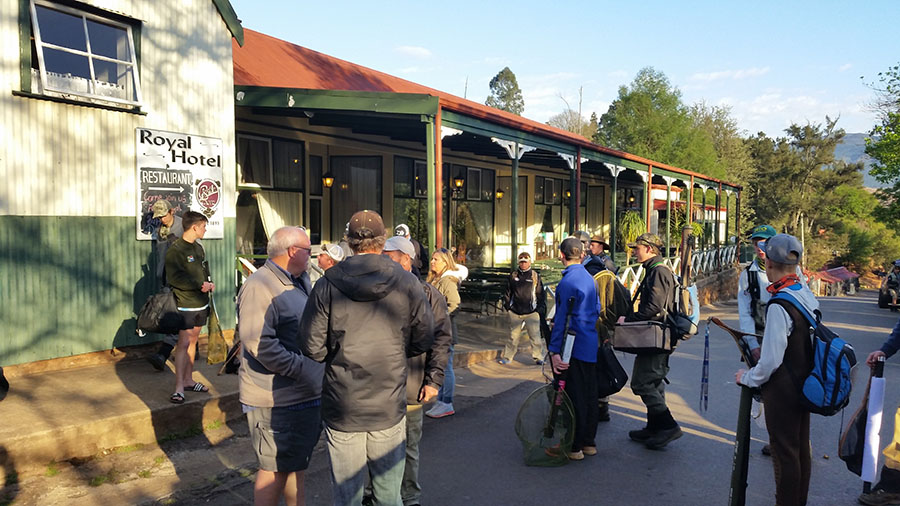
Loading up with the Royal Hotel, Pilgrims Rest
In fact, the MFFA are thinking seriously about an annual Pilgrims Rest Fly-Fishing River Festival starting next year around the end of May. We would limit the event initially to 33 anglers, (11 teams of 3). Some sponsors have already shown interest in the festival. Just so we can test the waters (no pun intended), anybody who might be interested in fishing or sponsoring the event, should contact either myself, This email address is being protected from spambots. You need JavaScript enabled to view it.">This email address is being protected from spambots. You need JavaScript enabled to view it. or Lyle Smith at This email address is being protected from spambots. You need JavaScript enabled to view it.">This email address is being protected from spambots. You need JavaScript enabled to view it..

Guido Brentot with a beautiful wild Blyde River rainbow
Tying better palmered sedges
This is not a pattern as much as an observation on tying palmered flies, like caddis imitations, or the Whickham's Fancy that Mark Mackereth so favoured in his early days on the Smalblaar. But there are literally hundreds of palmered patterns, including Woolly Worms, where this principle of tying would apply.
The most important step is to select the right-shaped hackle. A hackle with a more triangular profile is better than one with a straighter, more linear profile, because in winding on the hackle the wider fibres will be near the head of the fly and they will then slope away gently as you wind toward the tail end of the hook. You find these hackle towards the edges of the lower third of capes, but too near the outer edge where they become uniformly short and wide spade hackles, which you don't want.
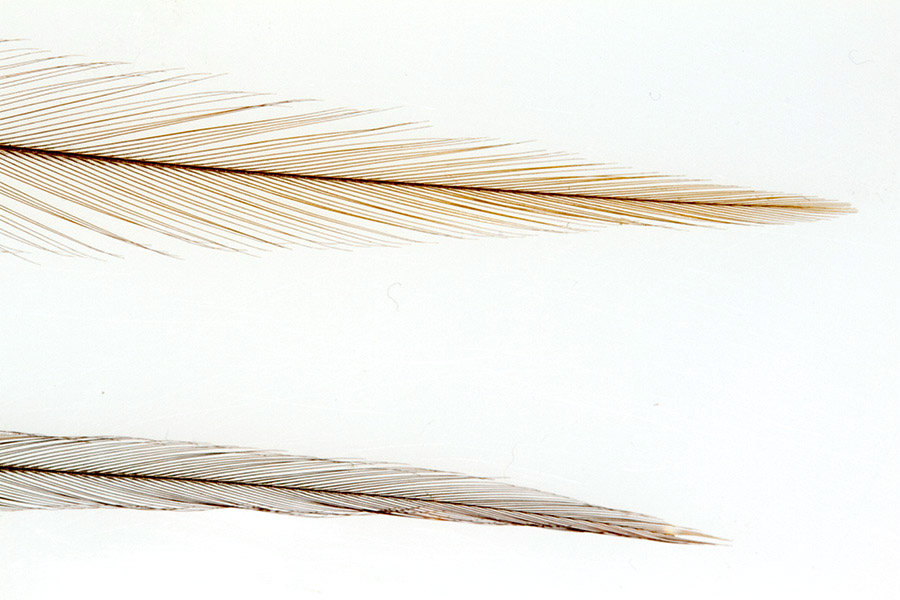
These two hackles come off the same cape. The top hackle has the more triangulate shape and is suitable for palmered patterns. The lower hackle is too uniformly linear.
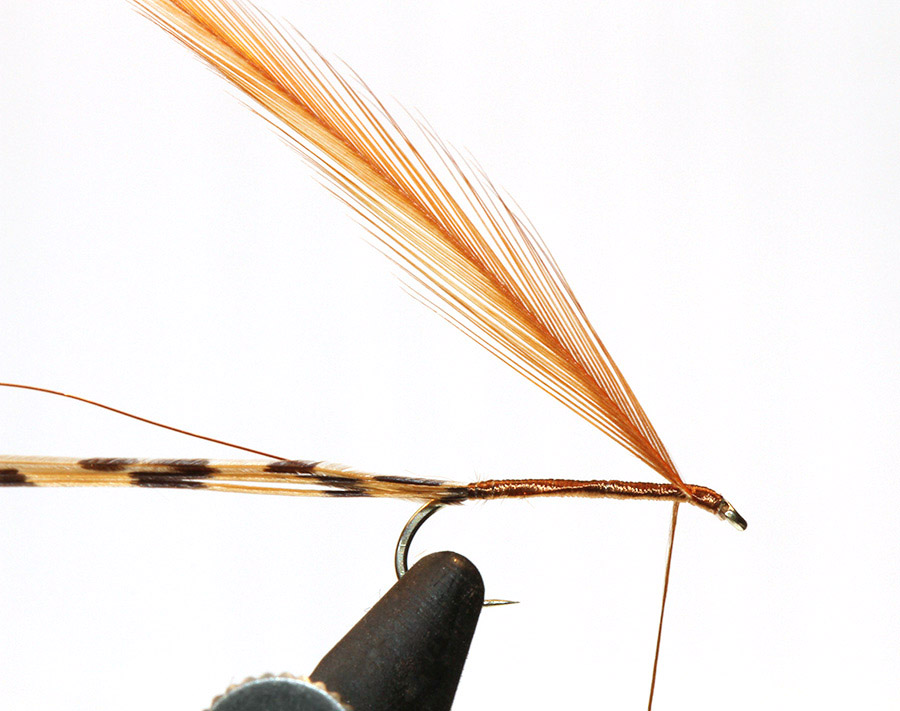
The hackle is tied in at the head. In this case pheasant tail and fine gold wire are tied in at the tail in preparation for the body.
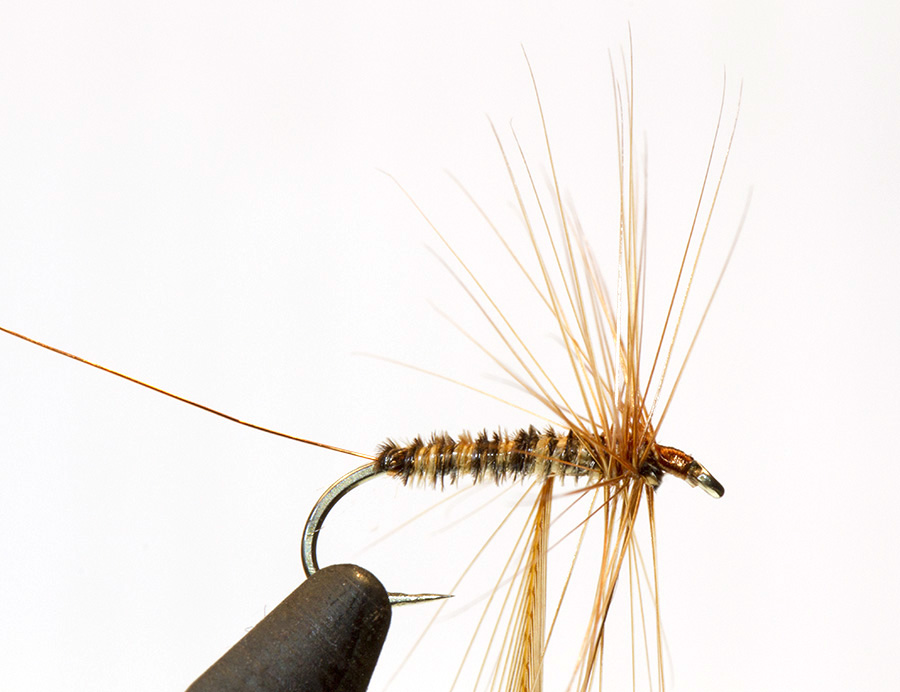
There are no less than five turns of hackle at the head of this fly, leaving little of the hackle left to wind down the hook shank, and most of that nearer the tip end of the hackle where fibres are shorter.
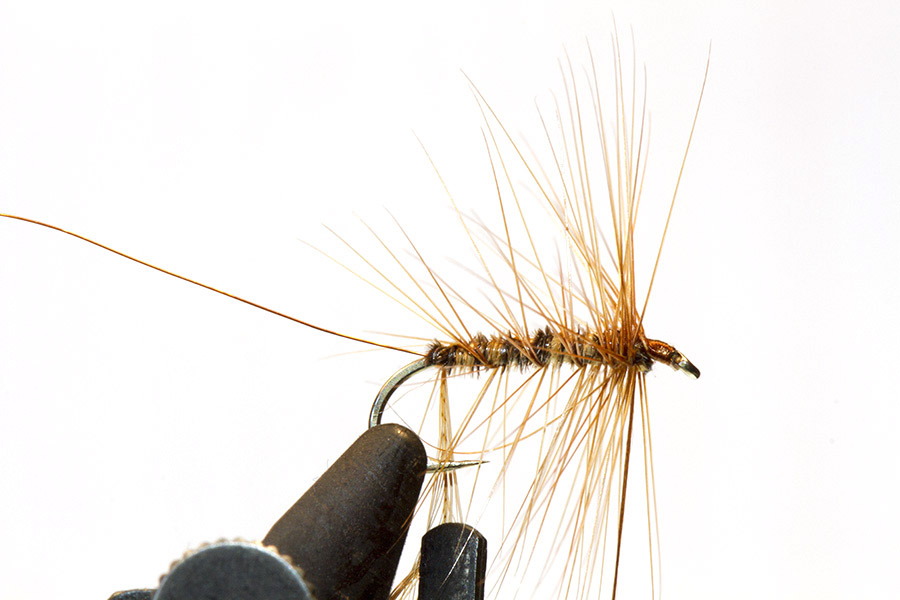
Note how as the hackle is wound towards the end of the hook shank the fibres naturally shorten.
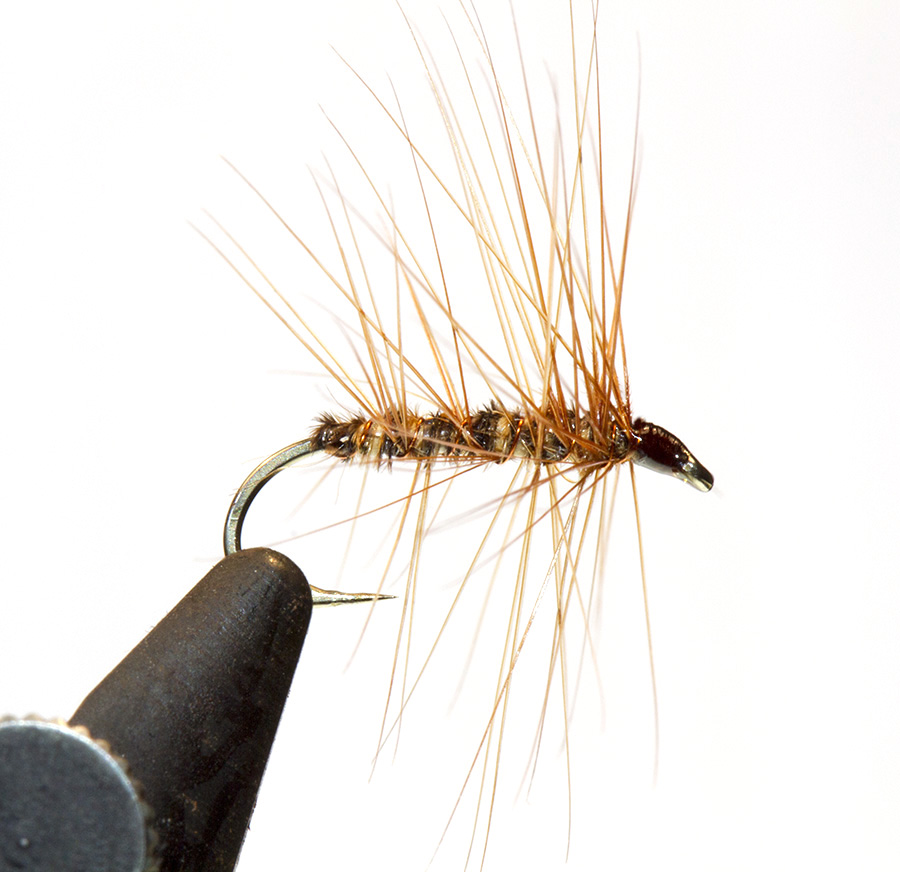
A palmered fly with conical balance is the result.
The biannual Cape Town Stellenbosch Invitational Fly-Fisher's Lunch
If anyone doubts the merits of a little 'off-water communion' among fly fishers they should read The Boys Upstairs at Manny Wolf's from Arnold Ginrich's book, The Well Tempered Angler, where he describes his regular New York lunch gathering of like-minded fishing types and says, inter alia, 'I divide all talk into two categories, not large and small, but simply talk that is and isn't about fishing.'
We gathered for the sixth time last week, our first lunch dating back to the 20th of April 2014 at Decameron Restaurant in Stellenbosch, this last one at the Wild Fig Restaurant in Cape Town. And the talk, as usual, was ample, light-hearted, convivial and fishing-centric. Transport was for the most part courtesy of Uber for reasons you will have little difficulty deciphering.
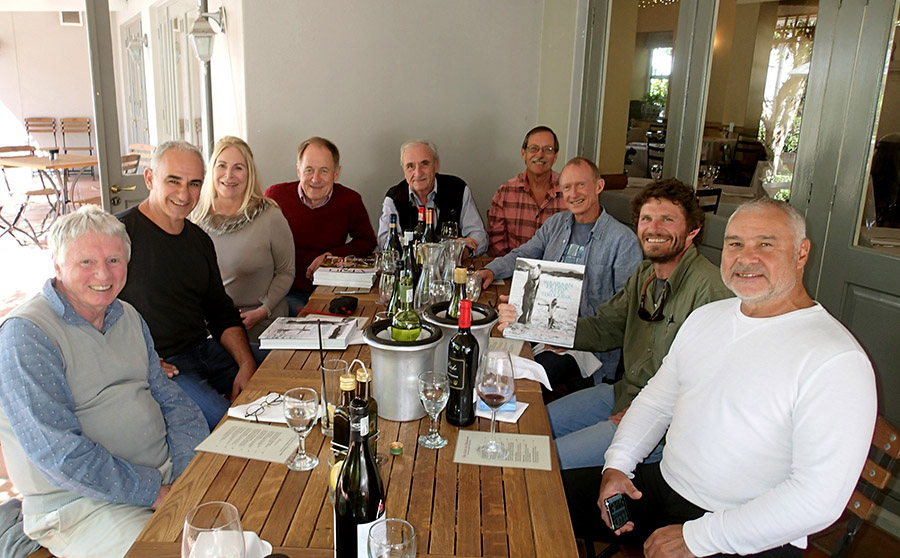
Seen at the biannual fly fishing lunch from left to tight, Ed Herbst, Platon Trakoshis, Sharland Urquhart, Piet Beyers, self, Robin Douglas, Pat Garratt (holding a copy of Piet's celebrated book, 'Waaraan Ek Dink As Ek Terugdink'), Chris Bladen and Riaan Heyns.
(For those interested in a copy of Piet's book send him an email at This email address is being protected from spambots. You need JavaScript enabled to view it.">This email address is being protected from spambots. You need JavaScript enabled to view it. )
Platon Trakoshis
It was Platon's first lunch and later he wrote a letter of thanks to all those present and added a memorable postscript:
Thank you for a wonderful lunch. It was great to get to know some of you better and to meet other likeminded fisher folk. I really look forward to the next one.
P.S. How beautiful is this fish I just got lucky with on Smalblaar Beat 3?


Beyond beautiful, I'd say.
Fishing the Dart
Says Andrew Apsey:
I had planned to fish the main West and East Dart Rivers, within the Dartmoor National Park in Devon, where the watersheds and rivers are managed by the West Country Angling Society - http://westcountryangling.com/
After a long week in the office, I was excited to get down to this part of the English countryside to fish these freestone rivers and streams. As they would be completely different to the usual beat I fish on the Avon and I was keen to adapt and learn some new skills over the two days. Thankfully, the weather Gods had been kind all week and the forecast was looking promising.

Main East Dart
On the first day I investigated the main East Dart, starting downstream from the little town of Postbridge. Described as 'providing miles of classic brown trout fishing set amongst beautiful moorland', it did not disappoint. The river was running low and clear, and a stealthy approach was essential. The river is of varied character with runs, riffles and classic pocket water meandering its way through the surrounding farm and moorland.

The river is of varied character
Despite the absence of hatches I had an urge to fish small emerger patterns for the wild brownies that inhabit these rivers. I have to be honest; I don't think any of these little beauties tested my 3WT to any great extent, but each and every one brought a smile to my face.

East Dart brown trout
The biggest lesson of the day, was 'don't ignore shallow runs'. I must have taken over a dozen of this fish in less than 6 inches of water!
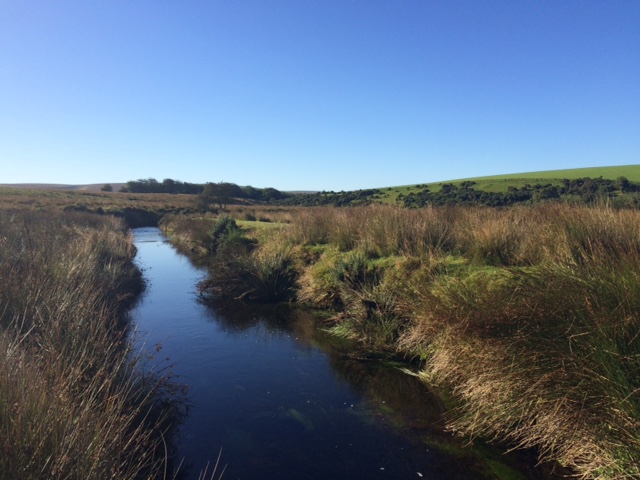
West Dart, slightly bigger than the East
My second day saw me on the West Dart, slightly bigger than the East as it is fed by several major tributaries namely the Cowsic, Blackabrook and the Swincombe. It is set in a spectacularly beautiful and peaceful valley and within minutes of setting foot in it's cool, clean flow I was overtaken by its charm. It too offered a variety of fishing conditions with boulder strewn stretches, deep pools, long glides and timeless runs with each wild brownie a joy to catch, attacking my size 18 emerger with reckless abandon.
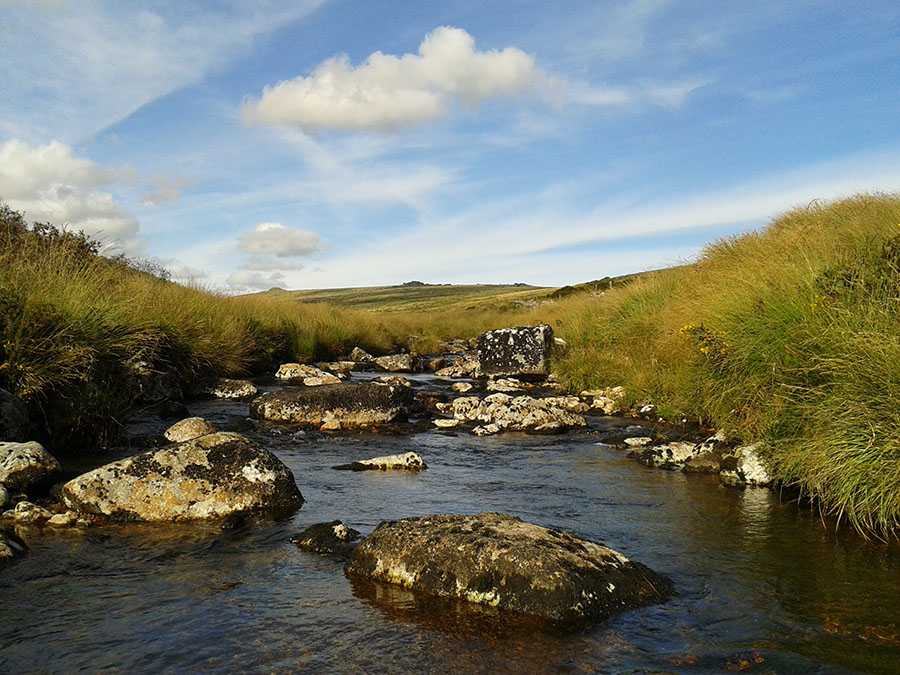
Upper West Dart
As time passed and I hiked further up into the moorland valley in pursuit of her headwaters and was gifted a warming autumnal afternoon. It made the experience even more memorable and a special way to remember my father on his birthday, the man I like to thank everyday for instilling my passion for all that fishing has to offer one's soul.
Lovely piece, thank you Andrew.
Tom Sutcliffe October 2016

